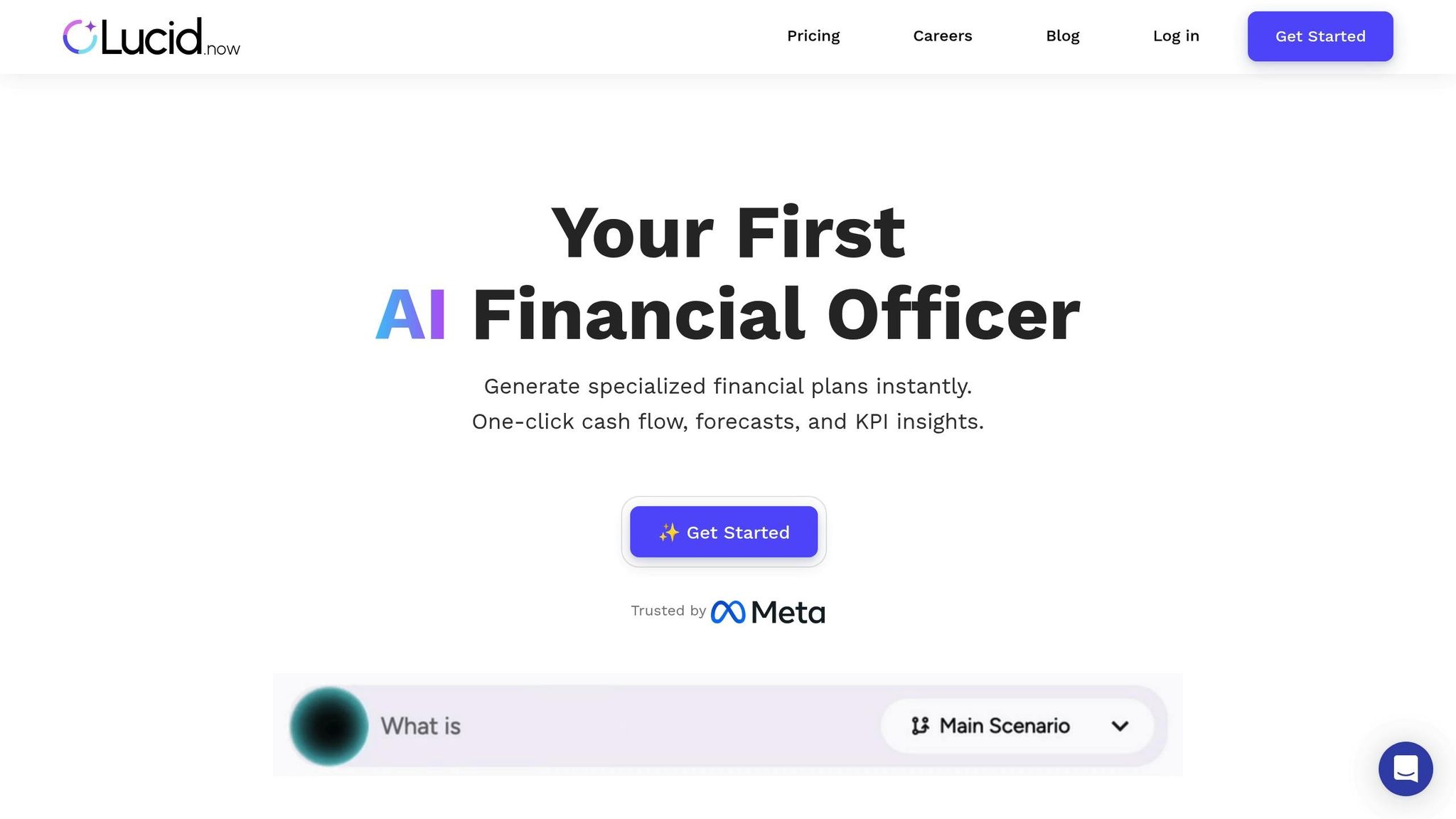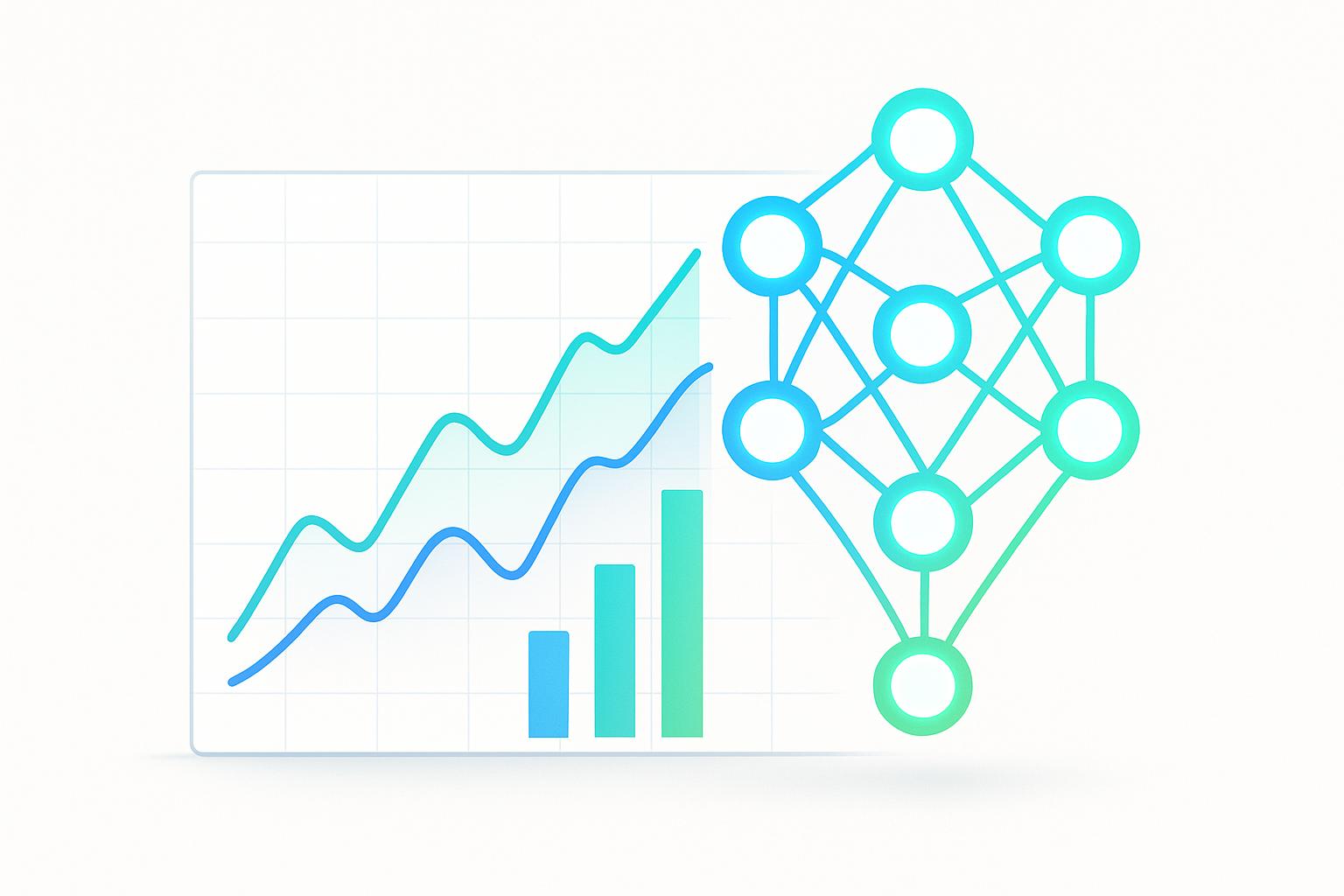AI is changing how businesses plan their workforce, making decisions faster, more accurate, and cost-effective. By analyzing data, AI helps companies predict staffing needs, address skill gaps, and align teams with business goals - all while saving time and cutting costs.
Key Benefits of AI Workforce Planning:
- Predict Staffing Needs: AI forecasts hiring requirements using historical data and trends.
- Fill Skill Gaps: Identifies where training or hiring is needed for future projects.
- Optimize Teams: Matches employee skills to tasks and business objectives.
- Streamline Hiring: Automates resume screening, scheduling, and candidate assessments.
- Fair Practices: Reduces bias in hiring with consistent evaluation and masked personal details.
Quick Overview of AI Applications:
- Hiring: Faster, unbiased recruitment through automation.
- Team Management: Balanced workloads and identifying leadership potential.
- Growth Planning: Scenario modeling for smarter workforce investments.
- Financial Insights: Real-time tracking of costs and budget impacts.
AI tools like Lucid Financials integrate with systems like QuickBooks and payroll platforms, offering real-time insights to make smarter workforce decisions. For businesses, this means building strong teams, scaling efficiently, and staying competitive - all while keeping costs under control.
AI for Future Workforce Needs
Predicting Staff Needs
AI-driven workforce planning uses data analysis to forecast staffing needs with precision. These systems examine a wide range of data, including historical hiring trends, employee turnover rates, and business growth patterns. By factoring in elements like seasonal changes, market conditions, and project timelines, AI can predict staffing requirements months or even years in advance.
"Scale Your Team by enabling hiring decisions based on AI-driven financial plans and forecasting." - Lucid Financials
This level of forecasting helps businesses pinpoint and address skill gaps as they emerge.
Finding Skill Gaps
With accurate staffing predictions, organizations can identify where their current skills may not meet future demands. AI systems continuously monitor and assess:
- Current employee skills in comparison to industry standards
- Emerging skills needed for upcoming projects
- Key areas for training and development
By addressing these gaps early, businesses can prepare their workforce without the high costs of last-minute hiring or rushed training programs.
Matching Teams to Goals
AI tools assist organizations in aligning their workforce with business objectives by:
- Evaluating team skills against company goals
- Designing scalable team structures that balance hiring needs with budget limitations
- Suggesting ideal team compositions based on financial projections
These platforms allow businesses to explore different team-building scenarios, helping them choose the best strategy for growth while staying financially secure. Unlike traditional planning methods, AI can analyze multiple factors - like budgets and skill requirements - at the same time, offering clear recommendations for team structure and expansion.
How to do strategic workforce planning | Ai Ai Ai in 3 minutes ...
AI in Hiring
AI is transforming the hiring process, making it faster and more efficient. By streamlining recruitment tasks, it allows teams to focus on evaluating top candidates.
Smart Resume Screening
AI-powered tools can review thousands of resumes in minutes, identifying the best matches for a role. These systems evaluate candidates based on:
- Skills match: Comparing qualifications to job requirements
- Relevant experience: Analyzing previous roles and responsibilities
- Educational background: Checking alignment with position needs
- Career growth: Reviewing career trajectories
AI systems continuously improve by learning from past successful hires. This automation frees up hiring teams to concentrate on interviews and other in-depth evaluations. Additionally, AI ensures a more consistent and unbiased initial screening process.
Fair Hiring Practices
AI helps companies maintain fairness throughout the hiring process by:
- Using consistent evaluation criteria: Ensuring every candidate is assessed equally
- Masking personal details: Reducing the potential for unconscious bias
- Analyzing language: Flagging biased language in job descriptions or evaluations
- Creating structured assessments: Standardizing candidate evaluations
By applying these tools, organizations can scale their hiring efforts without compromising on fairness or quality.
Faster, Better Hiring
AI speeds up recruitment while maintaining high standards by automating key tasks, such as:
- Scheduling interviews: Managing calendars without manual effort
- Verifying skills: Conducting AI-driven skill assessments
- Predicting success: Using analytics to identify candidates likely to excel in specific roles
- Automating communication: Streamlining updates for candidates
This approach ensures companies can keep up with hiring demands during growth periods. By combining speed with precision, AI helps businesses build strong teams that align with their goals.
For even better results, integrating AI hiring tools with platforms like Lucid Financials ensures recruitment aligns with both operational needs and budgetary considerations. This creates a smarter, more efficient path to scaling.
sbb-itb-17e8ec9
AI Team Management
Modern AI tools are reshaping how businesses manage teams, aligning talent with organizational goals more effectively.
Skill-Based Assignment
AI helps match employees to tasks by analyzing:
- Skill levels relative to task demands
- Past performance data
- Current workload to ensure balance
- Career growth opportunities
With tools like Lucid Financials, managers can monitor how these assignments affect team output and project budgets in real time. This insight enables better resource allocation while keeping costs under control. Once tasks are assigned, evenly distributed workloads further boost team efficiency.
Work Distribution
AI streamlines workload management by considering factors like:
- Task complexity
- Team capacity
- Project deadlines
- Collaboration needs
Using real-time data, these systems adjust workloads automatically to prevent burnout and keep key projects moving forward. Integrated with Lucid Financials, managers can assess how workload decisions impact team costs and overall project finances.
Finding Future Leaders
Balanced workloads also create opportunities to identify future leaders. AI pinpoints leadership potential by evaluating:
- Performance trends
- Problem-solving skills
- Influence within teams
- Career growth patterns
These insights help businesses focus on developing internal talent. Lucid Financials supports this by modeling the financial outcomes of promoting from within versus hiring externally. Its reporting tools also let executives track the return on leadership development efforts, such as improved team results and lower turnover expenses.
Getting Started with AI Planning
Setting up properly is crucial to ensure your team aligns with long-term business goals.
Setup Steps
Start AI workforce planning by gathering data from HR systems, payroll records, and performance metrics. Use tools like Lucid Financials to centralize this information, making decision-making more efficient.
Key implementation steps include:
- Data Assessment: Check for data quality and identify any gaps.
- System Integration: Link HR and financial platforms for seamless data flow.
- Team Training: Get your team ready to work with AI systems.
- Pilot Program: Test the process with a small group to refine it.
Once systems are connected, shift your attention to maintaining data accuracy and ethical practices.
Data and Ethics
Maintaining strong data integrity and respecting privacy are essential for successful AI use. Here are some best practices:
- Data Quality: Regularly check and confirm data accuracy.
- Privacy Protection: Use encryption and limit access to sensitive data.
- Bias Prevention: Keep an eye on AI decisions to avoid unfair outcomes.
- Transparency: Clearly communicate how data is being used to your employees.
Document the factors influencing AI decisions and set up review processes for workforce-related choices. After addressing ethics and data, focus on enhancing your team's AI-related skills.
Building Data Skills
Train your team in the skills needed for effective AI workforce planning:
| Skill Area | Training Focus | Expected Outcome |
|---|---|---|
| Data Literacy | Understanding workforce metrics and KPIs | Improved interpretation of AI insights |
| Tool Proficiency | Hands-on experience with AI tools | Better use of automation features |
| Analysis Skills | Turning data into actionable strategies | Smarter workforce planning |
Organize training sessions and promote best practices. Begin with basic Lucid Financials functions like headcount forecasting and budget tracking. Gradually move on to more advanced tools, like scenario modeling and predictive analytics. These skills will directly improve your team's ability to create effective workforce strategies.
Lucid Financials Tools

Team Growth Planning
Lucid Financials uses AI-powered tools to streamline workforce planning. It helps businesses make informed hiring decisions by analyzing financial capacity and growth trends. With this platform, users can create headcount forecasts that fit within their budgets and align with revenue goals.
Key features include:
- Scenario modeling to explore different growth strategies
- Budget impact forecasting for assessing the cost of new hires
- Real-time burn rate tracking to monitor spending
"Lucid has made it incredibly easy to track spending, plan ahead, and handle our growth. It's straightforward and effective." - Aviv Farhi, Founder and CEO @Showcase
These tools integrate with other system data, ensuring businesses have the insights they need to make smart growth decisions.
System Connections
Lucid Financials connects with key business systems to provide real-time insights into workforce costs and their impact.
| Integration Type | Benefits | Real-Time Data |
|---|---|---|
| QuickBooks | Tracks expenses automatically | Payroll costs |
| Payroll Systems | Monitors employee costs | Benefits spending |
| Banking | Tracks cash flow | Available resources |
These integrations remove the need for manual data entry and provide instant updates. As new data comes in, the system adjusts financial projections, keeping growth forecasts accurate and up-to-date.
Investor Updates
Lucid Financials makes it easy to create professional reports for stakeholders. These reports cover:
- Current team structure and costs
- Planned hiring strategies
- Growth trend analysis
- Financial impact assessments
"As our company grows, budgeting and cash flow management have become crucial. The features provided are essential and have greatly streamlined these processes for us." - Luka Mutinda, Founder and CEO @Dukapaq
Conclusion
Key Advantages
AI-powered workforce planning, through tools like Lucid Financials, reshapes how teams grow and manage finances. Here are the main perks:
- Instant Financial Insights: AI tools offer quick access to critical data like burn rates, payroll expenses, and resource availability. This helps businesses make faster, well-informed decisions and maintain steady cash flow during growth phases.
- Smarter Growth Planning: By evaluating past data and market patterns, AI enables precise staffing forecasts. This minimizes risks like over-hiring or understaffing.
- Improved Stakeholder Communication: Generate clear, data-backed reports that show the financial effects of workforce decisions, boosting investor trust and easing funding discussions.
"Keeping track of my finances used to be overwhelming, but now it's much simpler. The platform is well-organized and easy to navigate." – Erez Lugashi, Founder and CEO @Abilisense
These tools help businesses create actionable strategies for sustainable growth.
Next Steps
To implement AI-powered workforce planning effectively:
- Set Clear Objectives: Use Lucid Financials to define growth goals and financial limits. This ensures the insights and recommendations align with your business needs.
- Integrate Seamlessly: Connect your current systems with AI tools for a complete view of your financial data and accurate health assessments.
- Regularly Review and Adjust: Continuously use AI insights to refine your growth plans based on market changes and performance metrics.
"We found a powerful yet simple solution for our financial planning needs, which has been a great addition to our business." – Refael Shamir, Founder and CEO @Letos


